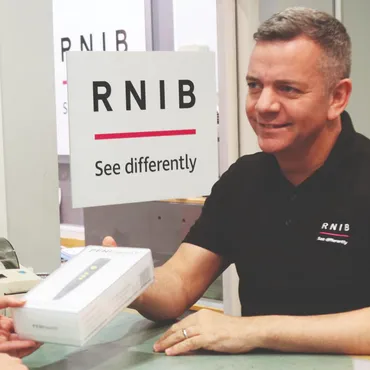Email marketing in the time of COVID-19
A targeted email campaign significantly increased newsletter subscribers and membership, showcasing the effectiveness of combining social media ads with a strategic email approach to enhance engagement and conversions.
Chatham House

The outcomes
- 4,233 Newsletter subscribers
- £0.87 CPA per subscriber
The background
Chatham House is one of the most respected policy institutes in the world. Their mission is “to help governments and societies build a sustainably secure, prosperous and just world.” We have been their digital marketing agency since 2014, providing pay-per-click (PPC), paid social media, email, SEO and analytics support.
A digital marketing Measurement Framework Model
In early 2020, we worked with stakeholders at Chatham House to devise a digital marketing Measurement Framework Model that drew from the organisation’s three-year Vision, Mission and Strategic Plan.
We revised seven strategic organisational objectives into three core digital marketing objectives, and from these, we defined goals and metrics under each to indicate whether we’d achieved that objective.
One of these objectives was to “reach and engage Chatham House's target audiences on third-party, owned platforms”. An extremely important platform in this respect is email—in the last 18 months, users from their email lists delivered 60% of the revenue generated through the website, and traffic from email to the website is of the very highest quality when measured against engagement metrics. We were asked to review, grow and evolve Chatham House’s email programme.
Our approach
Implementing a two-phase campaign
Between April and June 2020 we ran a two-phase campaign centred around the content Chatham House were producing in response to the COVID-19 pandemic. Each phase had distinct objectives:
- Phase 1: Acquire subscribers to a brand-new COVID-19 newsletter featuring latest COVID content.
- Phase 2: Follow up activity to convert COVID-19 newsletter subscribers to membership. Once subscribed, we wanted to see if it was possible to take users on a journey to membership, thereby also achieving a second revenue-focused objective we had defined.
Phase 1 saw us launch advertising activity on Facebook and LinkedIn. We took advantage of both platforms’ “lead-gen” ad formats, collecting email addresses from within the platform rather than sending users to a landing page on the Chatham House website.

Lead gen on Facebook
LinkedIn’s hyper-granular professional targeting (sector, job title, company etc) allowed us to target people in government departments and other relevant sectors. Facebook, which doesn’t offer the same precision but provides scale, allowed us to target users interested in specific news outlets, think tanks and public/government administrative bodies.
It quickly became apparent that Facebook was dramatically outperforming LinkedIn. The average cost to acquire an email sign up (our CPA) was over £26 on LinkedIn, compared to around £0.50 on Facebook. LinkedIn spend was paused, and budget was reallocated to Facebook. A second wave of activity targeted users in key cities in North America and Europe with slightly expanded interest targeting. We began remarketing to users who had previously visited the Chatham House website in the last 180 days and visitors to specific Coronavirus content.
The newsletter was also promoted on a number of different owned channels including the main Chatham House email newsletter, organic social channels and the inclusion of new end cards on key YouTube videos.
Our involvement didn’t stop there. We also worked with the in-house email team to:
- Define a schedule for the COVID-19 newsletter (twice a week at 9am every Tuesday and Thursday)
- Agree and advise on email content (a maximum of 4 articles per mail)
- Devise a programme of testing, which included subject personalisation, email formats (solus vs. newsletter) and landing page A/B testing. For this testing we used a combination of dotdigital’s A/B testing functionality and Google Optimize.
Once users were signed up to the COVID-19 newsletter, the second phase of this campaign kicked in. We ran a multi-step email marketing automation programme in dotdigital designed to nurture users towards membership. Users received incentives to sign up (e.g. 15% off) as well as various different emails based on their level of engagement with email content.

The results
12-week period results:
- A total of 4,233 COVID-19 newsletter subscribers.
- 1,066 subscribers from Facebook and LinkedIn ads, at a cost of just £0.87 per subscriber
- The COVID-19 newsletter had an open rate of 40%, compared to 27% for the main newsletter. The COVID-19 click-to-open rate was 21% compared to 14% for the central list.
- Conversion rates from users who clicked a link in a COVID-19 email were significantly higher than other channels. We counted PDF downloads and 75% video plays as conversions.
- 6 new memberships to Chatham House from users who signed up to the COVID-19 newsletter. The conversion rate for users signing up and then becoming members was 0.16%, compared to 0.02% for subscribers to the wider Chatham House newsletter. This proved our hypothesis that engaging users via a well-thought out, value-heavy content offering can lead to higher engagement at a much deeper level for organisations.
Along the way, we learned that LinkedIn was prohibitively expensive, and that Facebook is an extremely cost effective way of acquiring new email subscribers. In particular, our remarketing activity on Facebook had a much lower CPA than colder interest-based audience targeting.
Looking ahead
Evolving email journeys with Chatham House
This work marked a significant evolution in our relationship with Chatham House, but more importantly, it marked a major step change in the organisation’s approach to digital marketing and email journeys. We’re excited to be expanding our work with them as they continually evolve the email journey users are taken on, and build on these learnings in the months and years to come.



